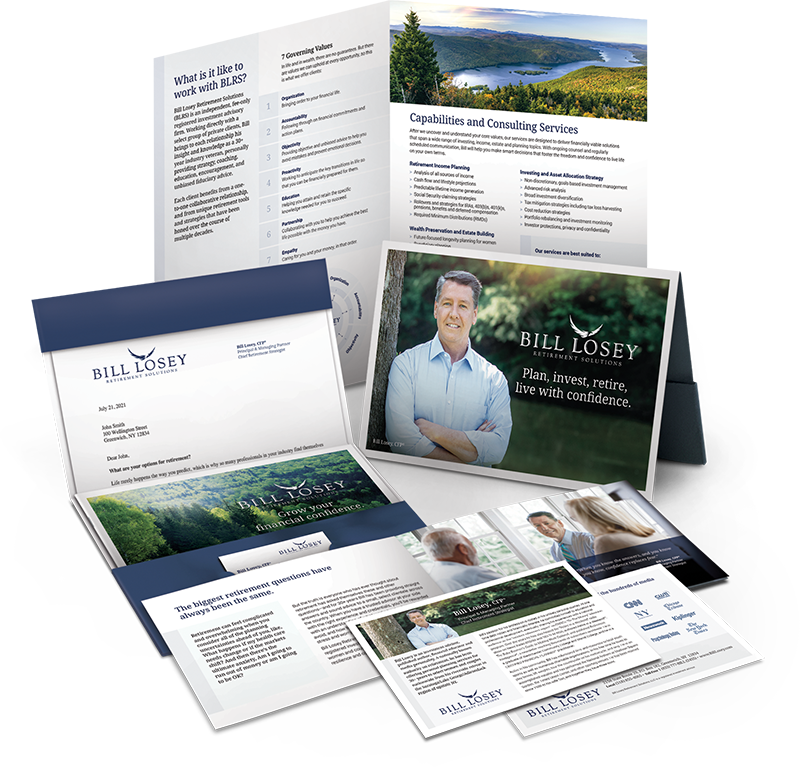Which Retirement Plan Is Right For You?
All retirement plans are not the same. In fact, there is such a wide variety of retirement plans that it is worth it to read up on your choices. Here’s a brief look at the different plans and what they have to offer.
The Traditional 401(k). Most people have such a retirement savings plan, and it works like this. The plan is funded with pre-tax dollars taken out of your paycheck (through payroll deductions). If you’re lucky, your company will match your level of contribution or even make contributions on your behalf – after all, the employer contributions are tax-deductible.
The I.R.S. will currently let you put up to $16,500 a year in a Traditional 401(k); COLA adjustments may drive that limit higher in the future. The I.R.S. also allows catch-up contributions (additional contributions from those aged 50+), with a current annual limit of $5,500. In 2010, the total amount put into a 401(k) by you and your employer can’t exceed $49,000.
There are several variations on the traditional 401(k) theme …
The Safe Harbor 401(k). A byproduct of the Small Business Job Protection Act of 1996, the Safe Harbor plan combines the best features of the traditional 401(k) and a SIMPLE IRA, making it very attractive to a business owner. With a Safe Harbor plan, an owner-operator can avoid the big administrative expenses of a traditional 401(k) and enjoy higher contribution limits. The Safe Harbor plan allows for employers to make matching or non-elective contributions. Typically, employers match contributions dollar-for-dollar up to 3% of an employee’s income.
The SIMPLE 401(k). Designed for small business owners who don’t want to deal with retirement plan administration or non-discrimination tests, the SIMPLE 401(k) is available for businesses with less than 100 employees. Like a Safe Harbor plan, the business owner must make fully vested contributions (up to 3% of an employee’s income). But the maximum pretax employee contribution to a SIMPLE 401(k) is $11,500, and employees with a SIMPLE 401(k) can’t have another retirement plan with that company.
The Solo 401(k). Combine a profit-sharing plan with a regular 401(k), and you have the Solo 401(k) plan, a retirement savings vehicle designed for sole proprietors with no employees other than their spouses. These plans currently permit you to contribute up to $49,000 annually plus $5,500 in catch-up contributions for a total of $54,500 if you are 50 or older.
The Roth 401(k). Imagine a Traditional 401(k) fused with a Roth IRA. Here’s the big difference: you contribute after-tax income to a Roth 401(k), and when you reach age 59½, your withdrawals will be tax-free (provided you’ve had your plan for more than five years). The annual contribution limits are the same as those for a Traditional 401(k) plan.
You can roll Roth 401(k) assets into a Roth IRA when you retire – and you don’t have to make mandatory withdrawals from a Roth IRA when you turn 70½. With a standard 401(k), you have to roll over the assets to a traditional IRA and make the required withdrawals.
The DB(k). The DB(k) is a defined benefit retirement plan with some of the features of a 401(k). Companies with fewer than 500 employees are starting to put them into place. They offer plan participants a retirement savings plan with the potential for a small income stream in the future, mimicking the pensions of years past. The pension income equals either a) 1% of final average pay times the number of years of service, or b) 20% of that worker’s average salary during his or her five consecutive highest-earning years.
And then there are SEP-IRA, SIMPLE IRA and Keogh plans …
The SEP-IRA. This employer-funded plan gives businesses a simplified vehicle to make contributions toward workers’ retirements (and optionally, their own). The employer contributions are 100% vested from the start, and the employer can supplement the SEP-IRA with another retirement plan. In 2010, these plans have a $49,000 maximum contribution limit, and an individual’s personal contribution limit depends on such factors as service, performance, and salary. These plans don’t permit catch-up contributions.
The SIMPLE IRA. This is like a SIMPLE 401(k) – a small business retirement plan with mandatory employer and optional employee contributions and a current $11,500 annual contribution cap. But in this plan, there is one big difference for the business owner. If the business is not doing well, the owner can reduce plan contributions. The employer contributions are still 100% vested from the beginning, and $2,500 catch-up contributions are currently allowed for employees 50 and older.
The Keogh Plan. The Keogh is designed for small unincorporated businesses. There are defined benefit, money purchase and profit-sharing variations; the defined benefit variation is a qualified pension plan offering a fixed benefit amount. In 2010, the annual contribution limit for a profit-sharing Keogh is $49,000.
Did you know you had so many choices? If you are an employer, you may not have realized you have such an array of choices in retirement plans. But you do, and asking the right questions may represent the first step toward implementing the right plan for your future or your company. Be sure to ask a qualified financial advisor or business retirement plan consultant about your options today.


